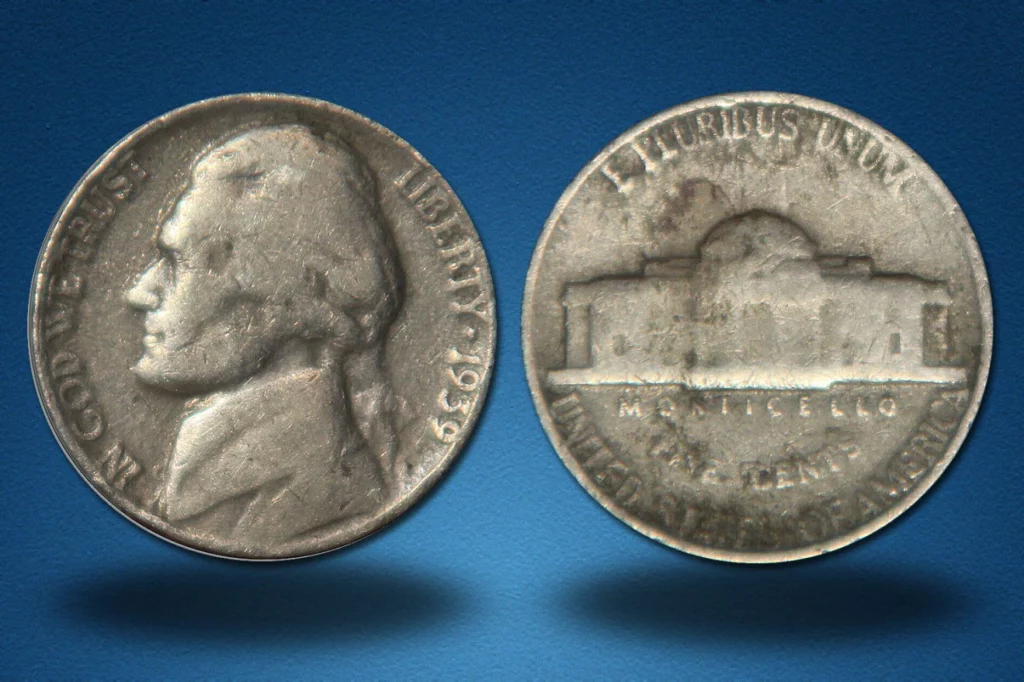The Henning Nickel is arguably one of the most fascinating coins in American history, but some people are debating whether or not to add it to their collection. Do you know what a Henning Nickel is?
Francis Henning, the man who created over 500,000 counterfeit nickels. Many Henning Nickels were recovered, melted down, and turned into actual nickels by the US Mint. Even though they are illegal to possess, they are a numismatic collector’s item, with some being quite valuable.
The Henning Nickel
The nickel was named after Francis LeRoy Henning, a native of Erial, New Jersey. Henning, in particular, was a counterfeiter who began by printing fake $5 banknotes. He was apprehended by authorities and sentenced to three years in prison.
They had no idea Henning would plot his following scheme involving a Jefferson nickel when he was released from prison in 1939. Various experts believe Henning manufactured 500,000 counterfeit nickels with engraved dates of 1939, 1944, 1946, 1947, and 1953.
Around 100,000 made it to circulation. The exact mintage numbers are unknown.
Chad Eicher, Owner of Metal Pursuits
According to Mr. Eicher, the 1944 Henning Jefferson nickel is the most commonly counterfeited coin in the series. (Source: Coin Week)
The Value of Henning Nickels
Calculating the value of the Henning nickel can be difficult. You won’t be able to find any price information on USA Coin Book or Professional Coin Grading Service because they were counterfeit.
Eicher, on the other hand, estimates that Henning Jefferson nickels are worth between $20 and $90, depending on the condition. These are almost always found in “good” to “fine” grades.
Meanwhile, a 1939 Henning Jefferson nickel recently sold for $404 on eBay. On the other hand, a few 1944 Henning nickels recently sold online with multiple bids. These were sold for $82.56, $97, and $104 dollars, respectively.
While it may appear ironic, Eicher pointed out that there are “many fakes” of counterfeit nickel. Considering the scarcity of these coins for sale online and the prevalence of counterfeits, purchasing these coins may be risky.
Also, keep in mind that possessing counterfeit currency is illegal. This coin has a crack in the lower portion of the letter R in the word PLURIBUS. However, no other 1939 Henning nickels have recently sold on eBay, so determining a general value is difficult. (Source: Coin Week)
Who is Francis Henning?
Francis Leroy Henning was born on September 18, 1891, in Erial, New Jersey. By the 1930s, Henning had begun his counterfeiting career by printing fake $5 bills, which had nearly the same purchasing power as modern $100 bills.
As a result, this posed a significant counterfeiting risk. Henning was apprehended quickly by the appropriate authorities, and he was tried, convicted, and sentenced to three years in prison. It’s unclear whether this time was spent in Boston or Buffalo.
To avoid the scrutiny he faced while printing and passing his previous counterfeit $5 bills, Henning decided to focus on lower-denomination, less suspicious coins for his second attempt at counterfeiting. Henning rented a building in his hometown of Erial to house his DIY coin press by 1953. This new venture was dubbed the Child’s Plastic Moulded Products Company. Henning lost nearly $7,000 or $71,042 adjusted for inflation at the end of his counterfeiting spree.
The authorities had arrested Henning by 1955. In addition, the US Mint had returned to the cupronickel standard for nickels. It melted and refined many blanks recovered from Henning’s Erial facility and approximately 40,000 coins, or $2,000 face value, salvaged from Cooper Creek for use in striking authentic coins that year. (Source: Coin Week)
Image from TheSun
